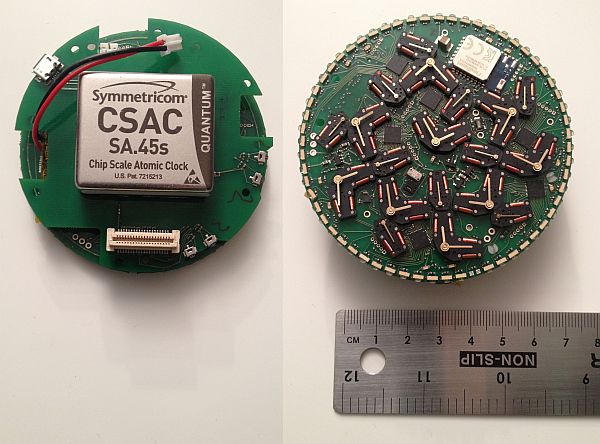
There’s going to be a rather interesting watch presented later this year at SalonQP 2013 in London – an atomic pocket watch called the No. 10 by Hoptroff. At first blush, you’re probably thinking that it’s just another atomic radio signal-syncing timepiece, albeit one that’s in a different format than we’re used to seeing (and even quite different from Bathys’ Cesium 133 atomic clock watch creation). However, this has the potential to be something a whole lot cooler (and one you likely wouldn’t want to take through airport security). The Hoptroff No. 10 is actually going to rely on an on-board atomic clock that relies on a cesium oven (which is why we’re seeing this in a pocket watch case, and not on your wrist) to maintain accuracy with the same Symmetricom atomic clock ship that the Bathys Cesium 133 uses, but here in a larger and probably more logical pocket watch form.
While details are still forthcoming (we’ll be able to provide a better sense of the watch as the November start of SalonQP draws nearer), we were able to ask the creator of the No. 10, Richard Hoptroff, some questions about both the brand and this new watch.
aBlogtoWatch (ABTW): Before we get to the atomic watch, I’d like to cover a bit about the company. Many folks outside of the UK are likely not familiar with the Hoptroff name – can you tell us a little bit about who you are, and how the company came to be?
Richard Hoptroff (RH): Our roots aren’t as glamorous as other luxury brands. My career so far has been tech start-ups; from forecasting software in the nineties to Bluetooth and USB electronics in the last decade. These companies’ successes has been due to the simple principles of quality engineering and visionary design. In essence – simple but effective tools. Giving free rein to my personal indulgence in horology, making high-end electronic watch movements is a logical progression.ABTW: From your background, it seems like watchmaking wasn’t necessarily on the map at first for you. How did you come to the point of founding a watch company?
RH: Watchmaking was always first on the map, and I love being able to do it now. But I had to bide my time for 20 years until my vision started to be achievable. The real triggers were the nanoWatt technologies that allowed complex electronics to run off a coin cell, and the innovation of building watch movements out of tiny stepper motors mounted on a printed circuit board backbone. Suddenly I realized I could actually fulfill my vision. That was a couple of years back. There’s been a lot of perspiration since, making it come true.
ABTW: Your existing models exhibit some very complex behaviors courtesy of the movements inside. Why did you decide to create such complex watches?
RH: The status quo is incredibly dull and backwards from my perspective. Watches are pieces of living jewelery – they should entertain and inform. Some of the Swiss custodians of the industry for the last century should be ashamed of their lack of ability to do much more interesting than a chrono. But it’s not about being complicated for its own sake. The complications must reflect the owner’s lifestyle and values. That’s why we do functions like pointing the direction to Mecca, or real-time share prices. more »

